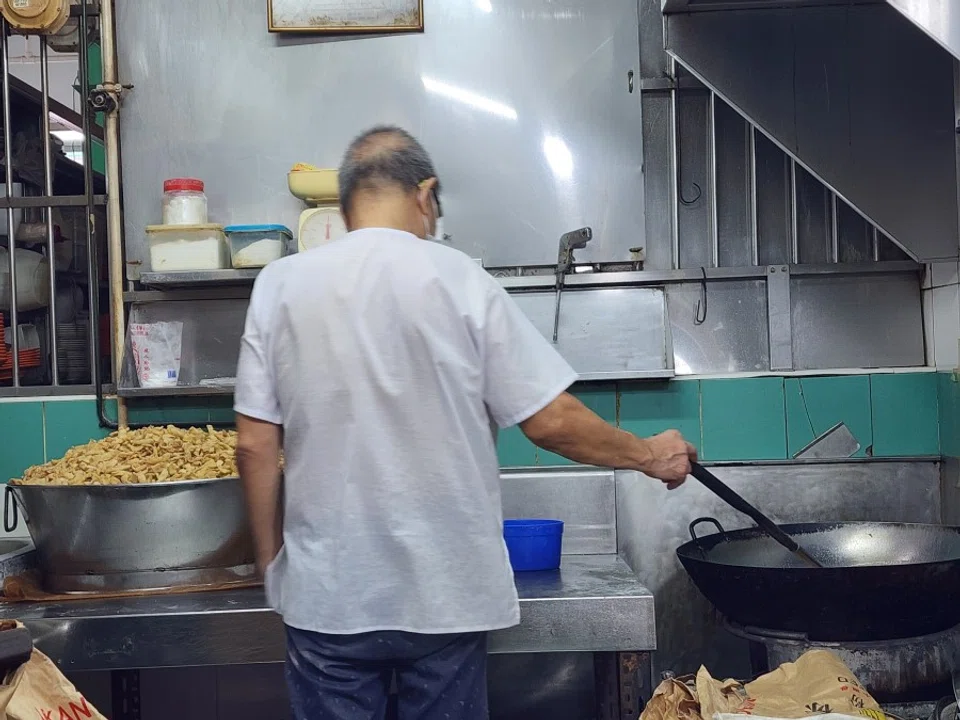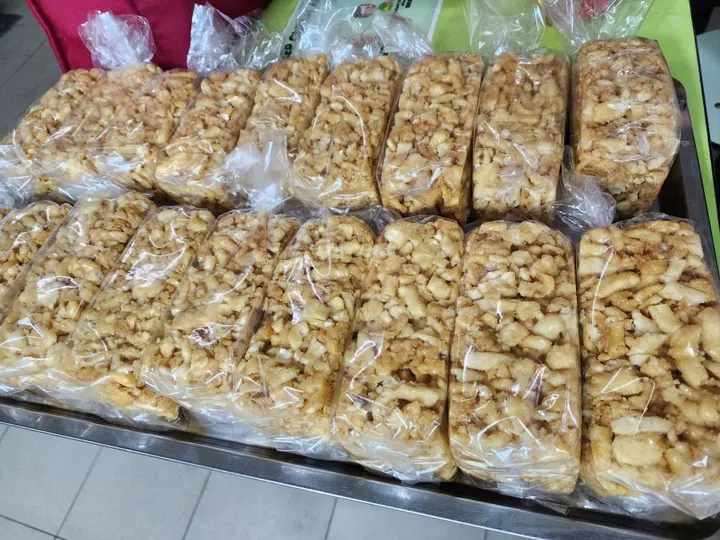How a 'Manchu' snack landed in Singapore's Chinatown
Former journalist Lim Jen Erh looks into the history of a traditional Chinese snack sachima, and finds that similar snacks are found as far as central Asia and Europe. Perhaps people, and food, are not so different anywhere in the world.

My earliest memory of the snack sachima (萨其马) was at People's Park Complex in Singapore. There was a little stall selling hum chim peng (咸煎饼, salty fried dough fritters), "rocket" fritters (火箭煎, also known as "butterfly" fritters 蝴蝶煎), pak tong koh (白糖糕, white sugar sponge cakes) and sachima.
Back then, People's Park Complex still held distinct Cantonese characteristics, and the stall owner spoke Cantonese. So as a child in my own little world, I was sure that these were all Cantonese snacks - even today, I still habitually refer to them in Cantonese.
The adults in the family occasionally picked up a few treats, but never sachima, which perhaps planted the seeds of my curiosity.
Sweet, crispy, soft and sticky
Later on, I managed to get a taste of sachima. It is very sweet, crispy and soft, and sticks slightly to the teeth, with a different texture from other sweet and savoury pastries. While supermarkets and other stalls do sell sachima in nice packaging, whenever I pass by Chinatown, I still seek out one little stall specialising in sachima.
... sachima was originally a Manchu snack and became popular in Beijing when Qing troops entered the city.

If I have time, I would buy a cup of traditional coffee and sit in front of the stall to watch the stall owner "perform": prepare the dough, cut it into short noodle-like strips, fry it in hot oil until crispy and fluffy, then scoop it out to drain the oil. Next, pour over the syrup, mix it evenly, place it in a square mould to flatten, and finally cut it into squares.
It is all freshly handmade by one person, and perhaps it is one of the last of its kind in the area. The sign says 刹骑马 (sha qi ma, lit. kill the rider and horse) - what does that mean?
The sachima in the supermarkets is produced in Guangdong, Xiamen, Taiwan and Chaozhou. I heard from a friend from Northeast China that they also frequently ate sachima as a sweet treat when they were young, which piqued my curiosity.
Across mountains and rivers
I did some research and found that sachima was originally a Manchu snack and became popular in Beijing when Qing troops entered the city.

The book Annual Customs and Festivals in Peking (《燕京岁时记》) from the time of Emperor Guangxu said, "Sachima is a Manchu snack made from a mixture of rock sugar, cream and white flour. It looks like glutinous rice, is baked in an ashwood oven, and then cut into squares. It is sweet and delicious."
So, in the sweetness is a distant flavour of history, and a long journey across mountains and rivers. Later, it spread to different regions and was called sachima, among variations of the name in the Chinese language. The Cantonese called it ma zai (马仔, lit. little horse), and people from all over China had their own phonetic interpretations.
I thought my curiosity about sachima was satisfied, but there was more to it. In a video, a Russian vlogger returned to the small town where she spent her childhood, in the Ural Mountains on the border of Europe and Asia. Many Tatar people lived in the village, and the video showed their dessert called chak-chak: it was sachima!
Apart from the Tatar people, in Central Asia, there are similar desserts in Kyrgyzstan, Uzbekistan and Kazakhstan.

Deep-fried short noodles mixed with syrup and scrunched into a dome shape - the preparation method was exactly the same. The host explained that chak-chak is the most representative traditional food of the Tatar people, a must-have at weddings. It might even come as a huge version shaped like a wedding cake.
Apart from the Tatar people, in Central Asia, there are similar desserts in Kyrgyzstan, Uzbekistan and Kazakhstan.
Loved by all
I became even more curious when I learned that chak-chak is said to originate from the Bulgars, an ancient nomadic people who lived along the Sea of Azov, and later settled in Eastern and Southern Europe in the 7th and 8th centuries, also leaving their footprints in Bulgaria and Italy.
An ordinary food like sachima has followed the trails of peoples in history and travelled far and wide, from East Asia to Central Asia, Eastern Europe and Southern Europe, covering vast territories.

However, when I looked at Bulgarian sweets, I couldn't find anything similar to sachima. In Italy, there is pignolata in Sicily and struffoli in Naples; in Lithuania in the Baltic Sea there is skruzdelynas. Each one is shaped differently but you can immediately recognise that they are basically sachima.
As the poem goes, "To see a world in a grain of sand." An ordinary food like sachima has followed the trails of peoples in history and travelled far and wide, from East Asia to Central Asia, Eastern Europe and Southern Europe, covering vast territories.
I wonder how many years it has seen - it is not easy to truly investigate the forgotten origins and unravel the age-old stories.

The only thing I can confirm is that it is very sweet, soft and delicious. It turns out that the writer Liang Shiqiu (1903-1987) also loved it. Another writer Lu Xun (1881-1936) also had a sweet tooth, as his diary mentioned his frequent visits to a pastry shop in Beijing, with an anecdote of him and his son Haiying wrangling over the last piece of sachima at home.
This article was first published in Lianhe Zaobao as "万里马".



![[Photos] Fact versus fiction: The portrayal of WWII anti-Japanese martyrs in Taiwan](https://cassette.sphdigital.com.sg/image/thinkchina/3494f8bd481870f7c65b881fd21a3fd733f573f23232376e39c532a2c7593cbc)

